Browsing the "Mesozoic" Category
The Mesozoic era, meaning “middle life”, is a division of earth’s history spanning from around 252 to 66 million years ago. It is subdivided into the Triassic, Jurassic and Cretaceous periods. The beginning of the Mesozoic is characterised by a long phase of recovery following the end Permian mass extinction. The end of the Mesozoic is marked by the Cretaceous/Paleogene extinction event which wiped out the dinosaurs among other groups.
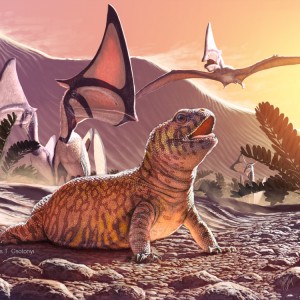
Published on August 26th, 2015 | by Liz Martin-Silverstone
A new iguanian fossil described in Nature Communications from the Late Cretaceous of Brazil is changing traditional views on early lizard evolution in the southern hemisphere. Lizards are split into two groups: acrodontan lizards (found in [&hellip... Read More →
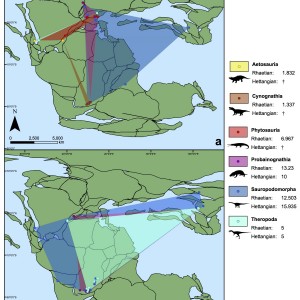
Published on August 11th, 2015 | by Liz Martin-Silverstone
A new study out today looks at the question of whether or not geographically widespread species are less likely to become extinct, using the Triassic-Jurassic boundary extinction event. Alex Dunhill from the University of Leeds had [&hellip... Read More →

Published on July 28th, 2015 | by Liz Martin-Silverstone
A new study out today has looked at the tooth development of theropod dinosaurs and found they had a novel morphology of the serrated teeth. Lead author Kirstin Brink of the University of Toronto had this [&hellip... Read More →
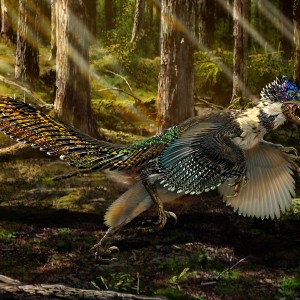
Published on July 16th, 2015 | by Liz Martin-Silverstone
Another new feathered dinosaur has been described today from the Early Cretaceous of China. Zhenyuanlong joins the ever expanding list of feathered theropods from this region, and has implications for the evolution of wings in dinosaurs. We [&hellip... Read More →
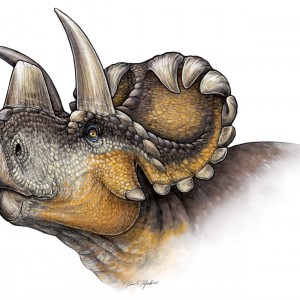
Published on July 8th, 2015 | by Liz Martin-Silverstone
Today, a new ceratopsian was named, Wendiceratops pinhornensis. While known to the public for sometime, it has now been officially named and described. It is an important find illuminating ceratopsian and centrosaurine evolution in North America. We spoke [&hellip... Read More →
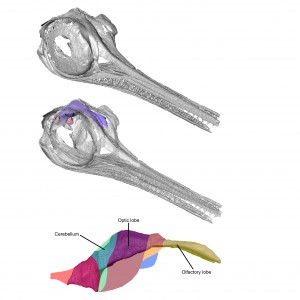
Published on June 12th, 2015 | by Liz Martin-Silverstone
A new study out today has produced the world’s first ichthyosaur endocast, which can tell us a lot more about how these ancient marine reptiles were adapted for life in the oceans. Ryan Marek from the [&hellip... Read More →

Published on April 1st, 2015 | by Liz Martin-Silverstone
Palaeontology is more than just going out into the field, digging up bones, and putting them back together. A good understanding of biology, geology, and even engineering can help to figure out how extinct animals lived [&hellip... Read More →
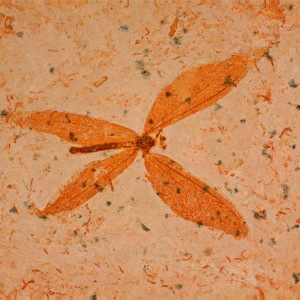
Published on March 1st, 2015 | by David Marshall
Insects are the most abundant and diverse group on animals on the planet today. Would they therefore also be expected to have the richest fossil record? When did they first evolve and how rapid was their [&hellip... Read More →
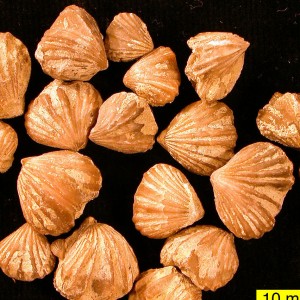
Published on February 1st, 2015 | by David Marshall
Brachiopods are some of the most common fossils to be found in rocks worldwide. Their thick, hard and (often) calcareous shells make them preferentially preserved in the fossil record. We probably all have found one, but [&hellip... Read More →
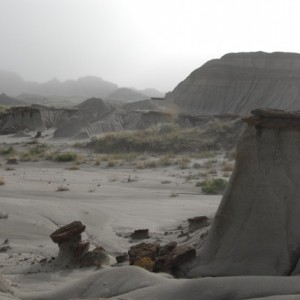
Published on January 1st, 2015 | by David Marshall
Alberta, Canada is one of the world’s richest areas for dinosaur fossils, and especially fossils from the Late Cretaceous. Iconic dinosaurs like T. rex, Triceratops, and Parasaurolophus, as well as numerous other dinosaurs and fossils can [&hellip... Read More →























